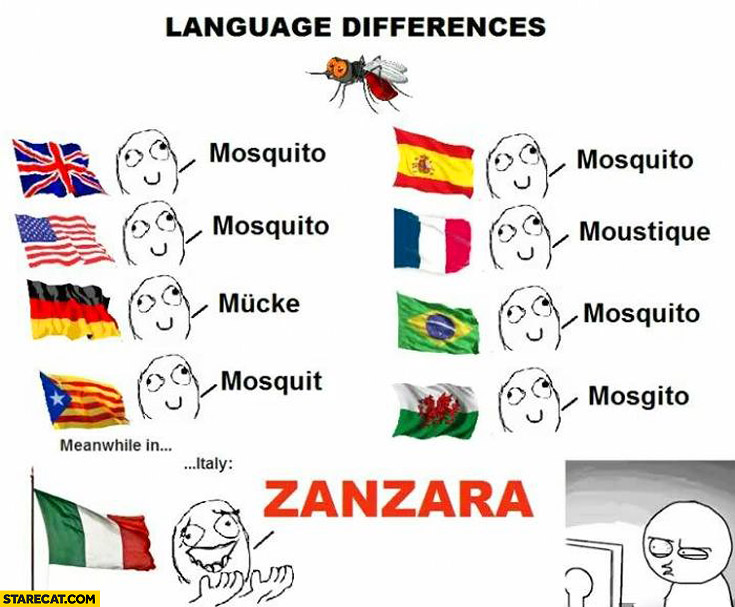Man In Italian Language
Italian is the second most spoken language in Argentina after the official language of Spanish, with over 1 million (mainly of the older generation) speaking it at home, and Italian has also influenced the dialect of Spanish spoken in Argentina and Uruguay, mostly in phonology, known as Rioplatense Spanish. How To Say: Words of Endearment in Italian. Language Schools. Babilonia Language School. Language Schools. ENJOY IT Italian Language Classes. What better way to learn the Italian language than some good old Netflix and Chill?Whoa, whoa, whoa! The 10 Best Italian Movies on Netflix Right Now. A small town man becomes entangled in the corrupt and intense world of Italian politics and, as you can imagine.
When traveling in Italy, you’ll find that the words and phrases you use most frequently will be the common Italian greetings. The words and phrases will quickly become second nature as you use them day in and day out with everyone you come across.
Saying hello and good-bye
As you’d expect, you should use a polite greeting when you run into someone you know or want to know. But in most Italy it is important to use the correct greeting depending on who you are greeting. So, you would use a different word for greeting your friend than you would for greeting your boss or teacher.
The most common ways to say greet someone in Italian are:
Ciao (hello; hi [Informal])
Ciao! is the most common way of saying hello and goodbye informally. You should never use it with someone like a boss or a teacher or anyone else with whom you’re using Lei (the formal version of you).
Salve! (Hi; Bye [Formal/Informal])
Che piacere vederti! (How nice it is to see you! [Informal])
Buongiorno! (Hello; Good morning; Goodbye [Formal])
Buona sera! (Hello; Good evening; Goodbye [Formal])
Use the longer Buon giorno and Buona sera in more formal situations, like when you enter a store.
There are also many ways to say goodbye.
Ciao! (Hi; Bye [Informal])
Salve! (Hi; Bye [Formal/Informal])
Ciao! Ciao! (Bye-bye!)
Buon giorno! (Hello; Good morning; Goodbye [Formal])
Buona sera! (Hello; Good evening; Goodbye [Formal])
Buona notte! (Good night! [Formal/Informal])
Use Buona notte! only when its bedtime and when you’re taking leave of people at night and you think that everyone is going to bed.
Arrivederci! (Goodbye! [Informal])
Arrivederla! (Goodbye! [Formal]) Distante rutiere europa.
A dopo! (See you later! [Formal/Informal])
A presto! (See you soon! [Formal/Informal])
A domani! (See you tomorrow! [Formal/Informal])
A fra poco. (See you in a bit.)
Handsome Man In Italian Language

Cheek kissing is another common type of greeting in Italy, as it is in most European countries. However, in Italy cheek kissing is reserved for greeting people you know well and is less common among men. To avoid bumping noses, the rule is to kiss left cheek first and then the right. When you meet someone for the first time, handshakes are much more common. As you get to know the other person, you move more into cheek-kissing territory.
Asking and replying to “How are you?”
How are you? How’s it going? How many times a day do we hear or say these brief greetings at the beginning of our conversations? So many times, in fact, that half the time, we don’t even pay attention. These pleasantries are common in Italy as well. The most common ways to ask how someone is doing are:
Come stai? (How are you? [Informal])
Come sta? (How are you? [Formal])
As you’d expect, when someone asks you how you’re doing, there are many responses.
Sto bene! (I’m well!)
Molto bene, grazie. (Very well, thanks.)
Abbastanza bene, grazie. (Pretty well, thanks.)
Non c’è male. (Pretty well, thanks.)
Sto bene grazie, e tu? (I’m well, thanks, and you? [Informal])
Sto bene, grazie, e Lei? (I’m well, thanks, and you? [Formal])
Non sto bene.; Sto male. (I’m not well.)
Malissimo! (Not well at all!)
Va bene. (Things are going well.)
Va tutto bene. (Everything’s going well.)
Va benissimo! (Things are going great!)
Va male. (Things aren’t going well.)
Così così. (So so.)
Non mi posso lamentare. (I can’t complain.)
Benissimo! (Great!)
How to address people
Italians like titles and tend to use them whenever possible. When addressing someone without using his or her last name, use the entire title as it’s listed here. But when you add the person’s last name to the title, you drop the final -e in the title. Use the Lei form when using any of the following titles:
Man In Italy
Miss (Signorina)
Mrs.; Madam (Signora)
Mister; Sir (Signore)
professore [M]; professoressa [F] (professor)
ingegnere (engineer)
dottore [M]; dottoressa [F] (doctor)
In Italian, dottore is used if the person has a university degree even though it‘s not a medical degree.